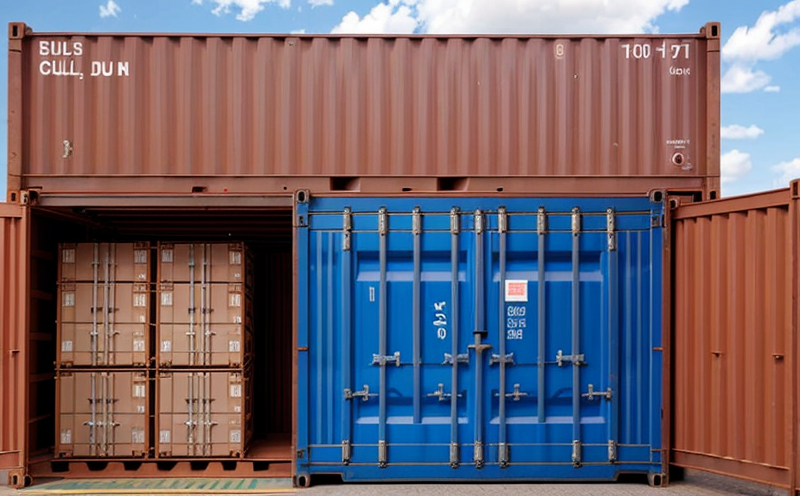USP Burst Testing of Blister Packs
USP Burst Testing is a critical quality assurance procedure used to evaluate the integrity and strength of blister packs in pharmaceutical packaging. This test ensures that blisters can withstand pressure without leaking, thus safeguarding the product's stability and efficacy.
The primary goal of USP Burst Testing is to determine whether the blister pack will maintain its integrity under specified conditions, ensuring patient safety and regulatory compliance with United States Pharmacopeia (USP) standards. In the pharmaceutical industry, packaging plays a pivotal role in protecting medications from environmental factors that could compromise their quality.
Blister packs are widely used for single-dose packaging of tablets and capsules because they provide a convenient form factor for patients to open easily. However, these blister packs must be robust enough to withstand various conditions during manufacturing, shipping, handling, and storage. USP Burst Testing helps manufacturers verify that their blister packs meet the required standards.
During this testing process, each blister pack undergoes pressurization until it fails or bursts. The pressure applied is calibrated according to the specific requirements outlined by the United States Pharmacopeia. This test ensures that blisters can withstand normal handling and shipping conditions without compromising the product's integrity.
The procedure involves placing a sample of blister packs into a specialized testing machine designed for USP Burst Testing. Once in place, the machine applies increasing pressure to each blister until it bursts or meets the specified criteria. The test results are then analyzed to ensure compliance with USP standards.
Understanding the parameters involved in this testing is essential for quality managers, compliance officers, and R&D engineers. This testing helps ensure that pharmaceutical products maintain their intended efficacy throughout the supply chain. By adhering to these tests, manufacturers can demonstrate regulatory compliance and provide safer packaging solutions.
Scope and Methodology
| Parameter | Description |
|---|---|
| Burst Pressure | The pressure at which the blister pack fails or bursts, typically measured in psi (pounds per square inch). |
| Type of Testing Machine | A specialized machine designed to apply controlled pressure to the blister packs. |
| Sample Size | The number of blister packs tested to ensure statistical significance and reliability. |
| Data Collection | Instruments record burst pressures, ensuring accurate data for analysis. |
The USP Burst Testing process typically involves several steps. First, the blister packs are prepared according to the specified standards. This includes ensuring that each blister is filled with the correct medication and sealed properly. Next, a sample of blister packs is selected for testing. The machine then applies increasing pressure until one or more blisters burst.
The data collected during this process is crucial for evaluating the integrity of the blister pack. It helps determine whether the packaging meets the required standards set by USP. This information is used to make informed decisions about product quality and compliance with regulatory requirements.
International Acceptance and Recognition
The United States Pharmacopeia (USP) Burst Testing procedure is widely recognized and accepted internationally as a standard for evaluating the integrity of pharmaceutical packaging. This testing method ensures that blister packs are robust enough to withstand normal handling, shipping, and storage conditions without compromising the product's quality.
Many countries around the world have adopted USP standards, including Canada, Australia, the European Union, Japan, and others. By adhering to these standards, pharmaceutical manufacturers can ensure their products meet international quality requirements and maintain compliance with global regulatory bodies.
The acceptance of USP Burst Testing in the pharmaceutical industry is due to its reliability and accuracy in assessing packaging integrity. Regulatory agencies like the FDA (Food and Drug Administration) and EMA (European Medicines Agency) recognize this testing method as a valid means for ensuring product quality and safety.
Competitive Advantage and Market Impact
- Enhanced Quality Control: By conducting USP Burst Testing, manufacturers can ensure that their blister packs meet the highest standards of integrity and strength.
- Increased Customer Trust: Demonstrating compliance with international standards builds trust among customers and regulatory bodies.
- Regulatory Compliance: Adherence to USP standards ensures that products are safe, effective, and reliable for patients.
- Potential Cost Savings: By identifying and addressing packaging issues early in the development process, manufacturers can reduce waste and improve overall efficiency.
The implementation of USP Burst Testing provides a competitive advantage by ensuring that pharmaceutical products meet rigorous quality standards. This testing method is particularly valuable for companies seeking to expand into international markets where regulatory compliance is essential. By demonstrating their commitment to product integrity through this testing, manufacturers can enhance their reputation and gain market share.





